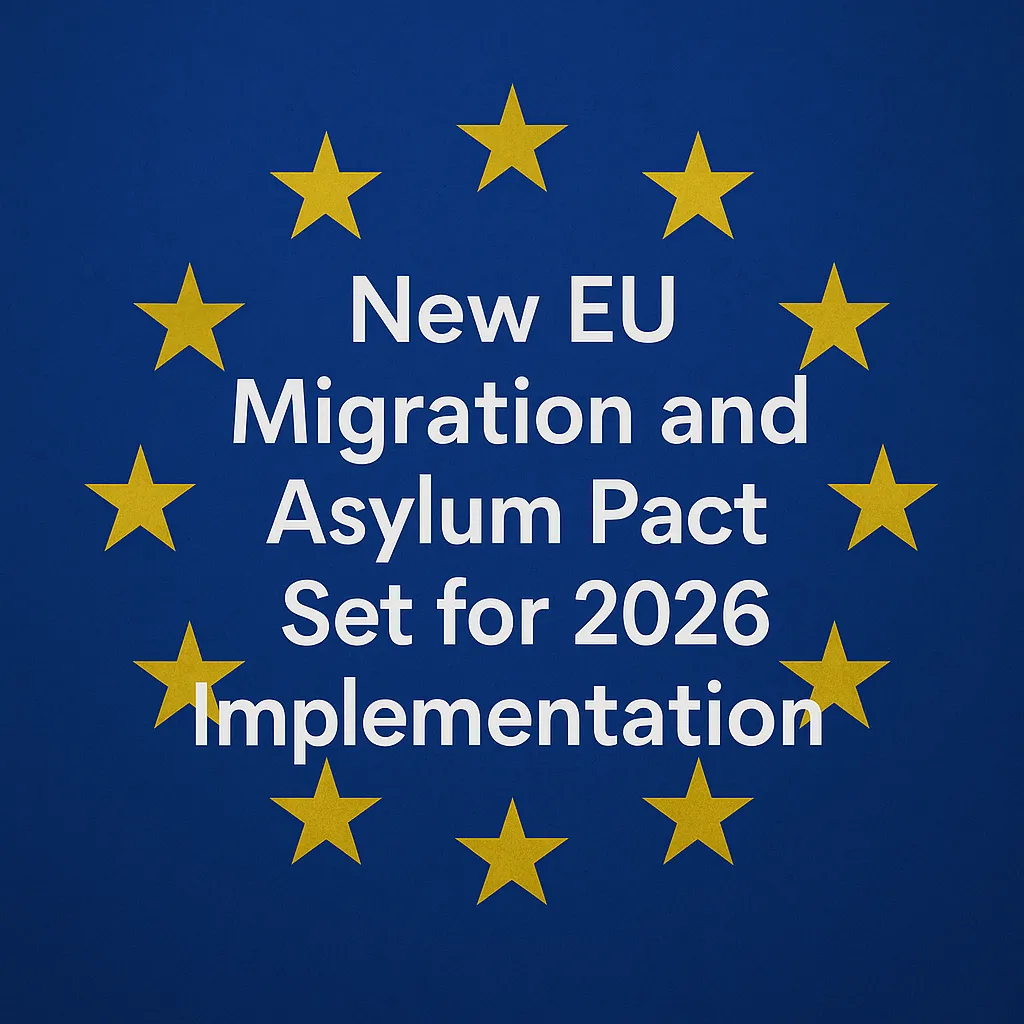After years of political debate and negotiation, the European Union has officially adopted a comprehensive Migration and Asylum Pact, scheduled to come into force in June 2026. The move marks a significant milestone in EU migration policy, aiming to strike a balance between solidarity and responsibility among member states.
The pact introduces structured reforms that address the handling of asylum applications, the protection of external borders, and the fair distribution of migrants across EU countries. Though not without controversy, the pact passed with majority support, even as some member states voiced opposition.
What Is the EU Migration and Asylum Pact?
This agreement is more than just a policy tweak. It’s a full-scale overhaul of how the EU handles migration and asylum requests. The new rules are meant to replace a system that has often been criticized as inconsistent, inefficient, and unfair—especially during crises like the 2015 migration wave or the recent fallout from conflicts near the EU’s borders.
The Migration and Asylum Pact is designed to bring clarity, shared responsibility, and faster response mechanisms to a policy area that has long lacked cohesion.
Key Elements of the Pact
The new pact is built around three major pillars, each of which aims to fix one of the EU’s ongoing migration challenges:
1. Fair Distribution of Responsibility
The pact introduces a burden-sharing mechanism that requires all EU member states to contribute to managing migration—either by accepting asylum seekers, sponsoring deportations, or offering financial or logistical support. This is designed to relieve pressure on front-line countries like Greece, Italy, and Spain.
2. Reform of Asylum Procedures
Current asylum processes can drag on for months—or even years. The new system will streamline procedures, particularly at the EU’s external borders, to ensure faster processing and return decisions. This also includes clear timelines and digital tracking to avoid backlog and uncertainty.
3. Strengthened External Border Control
One of the key goals is to bolster the EU’s outer border management. The pact supports greater coordination through Frontex (the European Border and Coast Guard Agency) and promotes stricter screening of arrivals, including biometric data and security checks.
Political Response: Divided Yet Decisive
While most EU countries backed the agreement, not everyone was on board. Poland and Hungary notably voted against the pact, arguing that it undermines national sovereignty and imposes unwanted obligations. Despite their opposition, the pact passed with a qualified majority, highlighting the EU’s commitment to collective reform—even in the face of internal disagreements.
Table: Core Components of the EU Migration and Asylum Pact (Effective 2026)
| Pillar | Objective |
|---|---|
| Fair Distribution | Share asylum responsibilities across member states |
| Streamlined Asylum Process | Accelerate and simplify application and return procedures |
| External Border Enforcement | Strengthen control and coordination at EU’s borders |
What Changes in 2026?
June 2026 will be a turning point. Countries will begin applying the new procedures, adjusting their national systems to comply with EU-wide standards. This will involve updating digital infrastructure, retraining staff, and realigning budget priorities to meet the pact’s requirements.
The shift won’t be without challenges. Differences in national policies, political resistance, and operational bottlenecks could still hinder a smooth transition. But for the first time in years, the EU has a shared framework with legal teeth.

